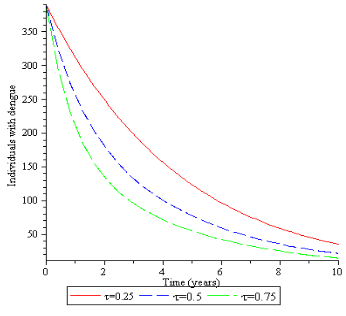The Solution of a Mathematical Model for Dengue Fever Transmission Using Differential Transformation Method
Keywords:
Dengue Fever, Mathematical Model, Differential Transformation Method, Ordinary Differential EquationsAbstract
Differential Transformation Method (DTM) is a very effective tool for solving linear and non-linear ordinary differential equations. This paper uses DTM to solve the mathematical model for the dynamics of Dengue fever in a population. The graphical profiles for human population are obtained using Maple software. The solution profiles give the long term behavior of Dengue fever model which shows that treatment plays a vital role in reducing the disease burden in a population.

Published
How to Cite
Issue
Section
Copyright (c) 2019 Journal of the Nigerian Society of Physical Sciences

This work is licensed under a Creative Commons Attribution 4.0 International License.





